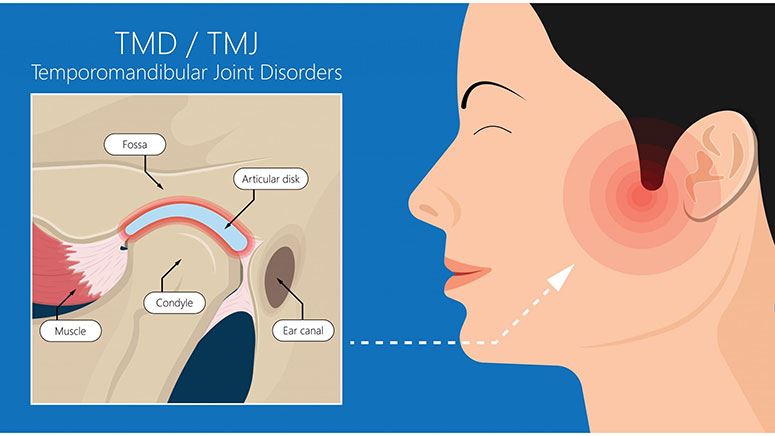Overview

Temporomandibular joint (TMJ) disorder is a pain that develops in the jaw joint due to movement of the joint and muscles. The temporomandibular joint or TMJ acts like a sliding hinge, connecting your jawbone to your skull. Dysfunction can lead to pain and discomfort.
Some persons are prone to developing TMJ disorders more than others, such as arthritis patients. Damaged joint cartilage can cause inflammation of the temporomandibular joint. Also, persons who have suffered forceful impact injuries to the face may also start to develop symptoms.
This condition may be self-diagnosable as it has some visible symptoms [1]. They include:
- Intense or mild jaw pain
- Difficulty chewing and making mouth movements
- Stiff or locked jaw joint
- Soreness in the face ear, neck, or mouth
- Muscle weakness and frequent fractures
- Headaches or migraines
- Muscle spasms
- Toothache
- Clicking sounds at the temporomandibular joint
- Misalignment of the lower and upper teeth, known as malocclusion
Note that you may experience one or more of these symptoms, and they may appear on one side or both sides of the face.
Now, let’s examine the symptoms closely:













